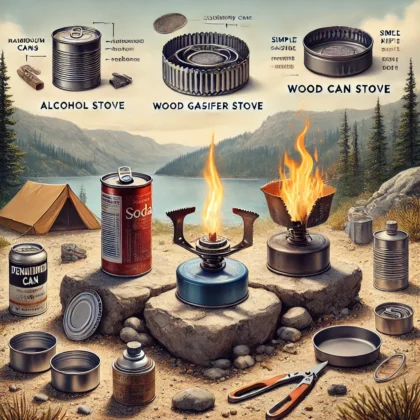Hiking is an exhilarating way to explore nature, but whether you’re trekking a short day hike or embarking on a multi-day backpacking trip, proper hydration is essential. Beyond the “drink eight glasses a day” myth, the science of hydration reveals that your water needs vary by individual factors—such as gender, fitness level, age, environmental conditions, and even the terrain.
In this article, we dive into the physiological role of water during exercise, review scientific findings on sweat and fluid loss, and offer practical guidelines and example hydration patterns for different groups of hikers.
[/vc_column_text][vc_column_text responsive_align=”left”]Understanding Hydration on the Trail
Why Water Matters
Water is the medium through which our bodies regulate temperature, transport nutrients, cushion joints, and remove waste. Even a small deficit—losing as little as 1–2% of body weight in water—can lead to fatigue, impaired cognitive function, and decreased performance on the trail. During physical exertion, especially in hot or humid conditions, sweat losses can be significant. Researchers have demonstrated that hiking in the heat not only elevates core temperature but also impairs performance if fluid losses are not adequately replaced pmc.ncbi.nlm.nih.gov.[/vc_column_text][vc_single_image image=”30600″ img_size=”medium” add_caption=”yes” alignment=”center” css=””][vc_column_text responsive_align=”left”]
The Physiology of Sweat
Sweating is our body’s natural cooling mechanism. However, sweat isn’t just water—it contains electrolytes, primarily sodium and chloride. Losing too many electrolytes without proper replenishment can lead to muscle cramps and even impact cardiovascular function. For this reason, hydration strategies often include both water and, in some cases, electrolyte supplementation, particularly on long or intense hikes gssiweb.org.
[/vc_column_text][vc_column_text responsive_align=”left”]Hydration Metrics and Guidelines
Experts generally recommend that hikers monitor hydration by considering:
- Pre-hike hydration: Start well-hydrated by drinking 300–500 ml of water 30–60 minutes before setting out.
- During the hike: Aim to sip approximately 150–250 ml (5–8 oz) of water every 15–20 minutes during moderate activity. This equates to roughly 500 ml every 30 minutes for many hikers.
- Post-hike rehydration: Replace any weight loss by drinking about 500–700 ml of water for every pound (0.45 kg) lost during the hike.
These guidelines help ensure you maintain your fluid balance without overloading your system, as even mild dehydration can affect your physical and mental performance massgeneralbrigham.org.
[/vc_column_text][vc_single_image image=”30604″ img_size=”large” add_caption=”yes” alignment=”center” css=””][vc_column_text][/vc_column_text][vc_column_text responsive_align=”left”]
Tailoring Hydration: Examples by Demographic
Hydration needs vary greatly between individuals. Below are example hydration patterns that adjust for gender, fitness, and age:
1. Males vs. Females
-
Males:
- Average Fit (70 kg): A moderately fit male may require about 500 ml every 30 minutes during a 2–3 hour hike in moderate conditions. Over the day, this might total around 2.5–3 liters on the trail.
- Example Pattern:
- Pre-hike: 500 ml
- During hike: 500 ml every 30 minutes
- Post-hike: Additional 500–700 ml per pound of weight lost
-
Females:
- Average Fit (60 kg): Due to generally lower body mass, females might aim for slightly less—around 400–500 ml every 30 minutes. Total intake on the trail might be around 2–2.5 liters.
- Example Pattern:
- Pre-hike: 400 ml
- During hike: 400–500 ml every 30 minutes
- Post-hike: Adjust rehydration based on individual weight loss
2. In-Shape vs. Out-of-Shape
-
In-Shape (Fit) Hikers:
Fit individuals may have a more efficient sweating mechanism and might pace themselves faster. Although they might sweat more if pushing harder, their bodies can often compensate better. A fit hiker could follow the baseline pattern (e.g., 500 ml every 30 minutes), but monitor for signs of overexertion and adjust if necessary. -
Out-of-Shape Hikers:
Less-fit hikers might experience higher perceived exertion and may lose fluids more unpredictably. They should consider a more conservative approach, such as taking 400–450 ml every 30 minutes, and ensure they pre-hydrate more rigorously to counteract a diminished thirst response.
3. Older vs. Younger Hikers
-
Older Adults:
Aging can reduce both the sensation of thirst and the efficiency of thermoregulation. Older hikers should pre-hydrate (an extra 250–500 ml before starting) and take smaller, more frequent sips (around 400 ml every 30 minutes) to maintain steady hydration, as their bodies may not trigger thirst until more significant dehydration occurs. -
Younger Hikers:
Younger, generally more resilient individuals can often rely on their natural thirst signals but should still adhere to regular hydration intervals (around 500 ml every 30 minutes) to avoid performance declines, especially in hot weather.
Practical Tips for Staying Hydrated on the Trail
- Monitor Your Weight: Weigh yourself before and after long hikes to determine your sweat loss and adjust fluid intake accordingly.
- Use the “Urine Color Test”: Aim for light yellow urine. Dark urine can indicate dehydration.
- Plan for the Environment: In hotter, more humid conditions, increase your fluid intake by an additional 250–500 ml per hour.
- Include Electrolytes When Needed: For hikes lasting over 2 hours or in extreme heat, consider drinks with electrolytes or add a pinch of salt to your water.
- Carry a Reusable Bottle or Hydration Bladder: This not only helps track your intake but also ensures you have regular access to fluids.
- Set Reminders: Use a timer or hydration app to remind you to drink every 15–20 minutes.
Conclusion
Understanding the science behind hydration allows hikers to tailor their water intake to their unique needs. Whether you’re a fit young male or an older, less active female, adjusting your hydration strategy according to your body’s signals and environmental conditions can help you maintain peak performance and overall health on the trail. Remember, staying consistently hydrated isn’t just about avoiding dehydration—it’s about supporting your muscles, maintaining cognitive function, and ensuring that every step you take is powered by the optimal balance of water and electrolytes.
By following these guidelines and monitoring your personal hydration status, you’ll be better equipped to conquer any trail, no matter the conditions.
For more detailed scientific insights on hydration, see studies on hiking performance in the heat pmc.ncbi.nlm.nih.gov and dietary water requirements for active adults gssiweb.org.
[/vc_column_text][/vc_column][/vc_row]

